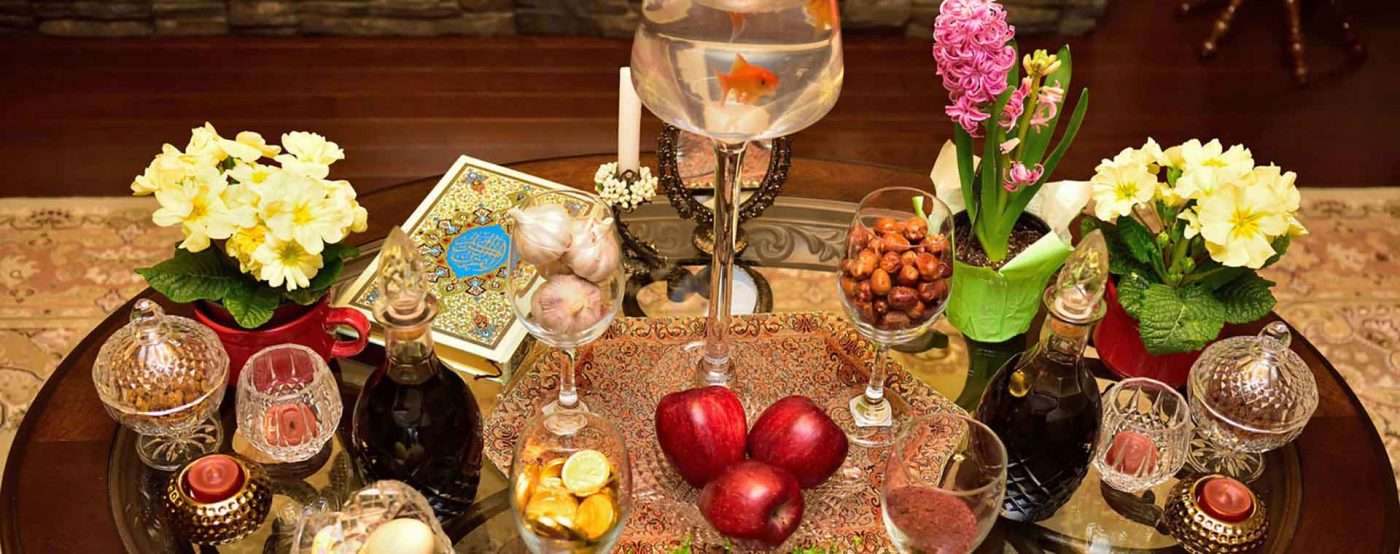
Nowruz (Persian New Year)
Persian New Year celebration is called Nowruz. It takes place in the spring season and people celebrate the first day of the Spring. Read this article to know more about this important celebration.
Nowruz is the Persian celebration of the New Year which is held in spring. It’s the most important festival of the year in Iran, and it’s a public holiday in many countries such as Afghanistan, Albania, Azerbaijan, Georgia, Iran, Iraqi, Kazakhstan, Kosovo, Kyrgyzstan, Bayan-Ölgii in Mongolia, Tajikistan, Turkmenistan, and Uzbekistan. There are many customs and traditions during this holiday and the students may have 13 days’ holiday from school.
When is it?
Nowruz (meaning “The New Day”) begins at the exact day, hour, and minute of the spring equinox, when the length of night and day are equal. It usually happens on the 21st of March and is somehow a new beginning as the winter changes into spring.
Spring cleaning
People prepare for Nowruz by cleaning the house; This is done with the help of all the members of the family. People clean carpets, windows, and curtains and do some dusting. They renew and replace any old or broken object in the house. By doing spring cleaning, people wash away the bad things from the past year and prepare for better things to come in the new year. They also buy and put on new clothes to symbolize a fresh start.
Fire jumping
In the evening of the last Wednesday before Nowruz, people make bonfires and jump over the flames. The fire burn away sickness and bad luck. It is important to note that the fire is a sacred element in the ancient Zoroastrian religion.
Nowruz and the seven ‘S’s
It’s important to start the year well, surrounded by family and loved ones. So, just before Nowruz, the whole family gathers together and celebrate around a special table in their house. This table is called the haftseen, meaning seven Ss’. People put seven special objects on the table that start with the “S” sound in the Persian language. Each element symbolizes something.
These objects may be more than seven but seven of the most common ones are listed below:
Somaq: a bright red spice made from crushed berries. Symbolizes sunrise and the spice of life.
Sonbol: hyacinth which symbolizes the spring.
Sekeh: coins that symbolize prosperity.
Senjed: the sweet dry fruit of the lotus tree representing love.
Seeb: apples that symbolize health and beauty.
Samanu : a sweet pudding made from wheat showing the sweetness of life
Sabzeh: sprouted wheatgrass which symbolizes rebirth and the renewal of nature.
In addition, depending on the traditions of each region and ethnicity other symbolic objects are placed on the table. These include painted eggs, candles, and a mirror, a Hafez poetry book, and a goldfish.
Besides the countries that normally celebrate Nowruz, Iranian communities who live outside Iran also gather and celebrate this Day.
During this holiday sometimes events are organized to promote Iranian culture. These can include film screenings, concerts, and museum exhibitions.
